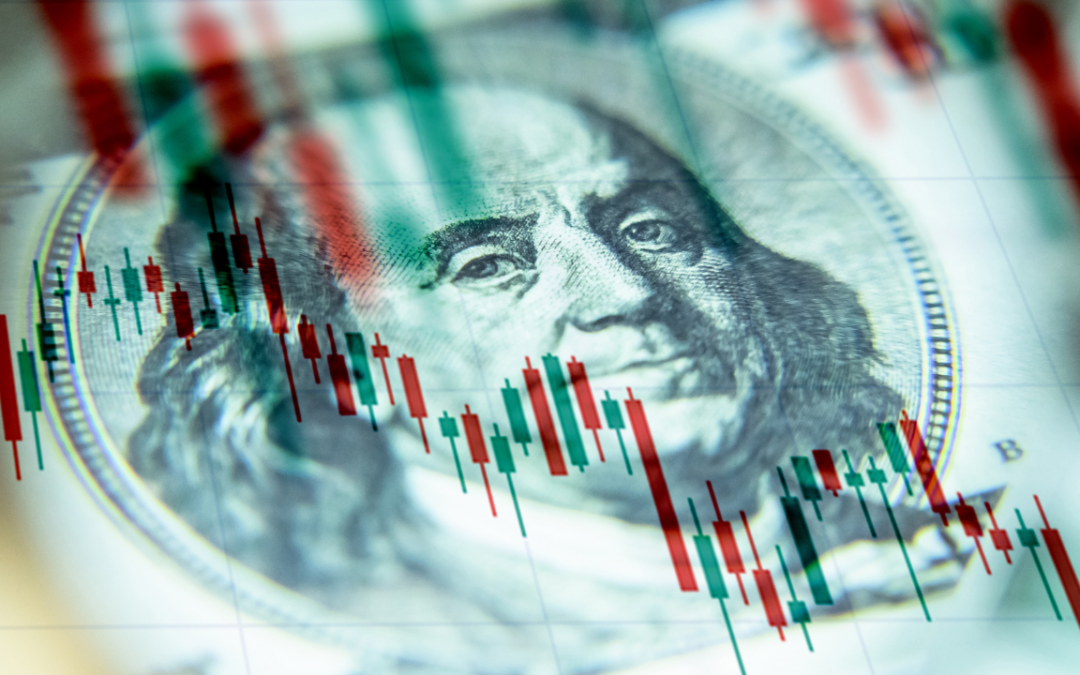This past week, global equity market got a lift from a familiar friend—mega-capitalization technology. Despite a shellacking from Congress during public hearings, a day later the biggest information technology stocks delivered mostly robust revenue and earnings results for the second quarter. This political-financial juxtaposition was all the more jarring, given that in the same quarter US and (most probably) global GDP contracted at its fastest rate since the Great Depression.
As we’ve noted in this space before, broad equity indices are more and more reliant on the performance of a few companies, which have lifted markets in recent months. The top-five companies in the S&P500, for example, account for over 20% of the index market capitalization. Information technology now makes up for more than one quarter of S&P500 value, the greatest concentration in the index’s history.
The risk to investors is not just a narrow base of crowded positions. Earnings momentum for the market as a whole is deeply negative. Sentiment indicators related to the performance of companies with more variable earnings is also deteriorating. Historically, when both are negative, the market pauses or declines.
Investors also appear to be souring on the US, which hitherto has been the source of equity market leadership. The sign of investor disquiet is the currency market, where the dollar continues to slip. The dollar’s 1% dip against the euro last week, though small, was nevertheless notable, given that it occurred despite news that GDP fell by even more across Europe in the second quarter than it did in the US.
Investors, it seems, are ignoring the recent past and looking ahead. They appear willing to anticipate better relative growth in Europe over the remaining months of 2020. Their faith is supported by sentiment indicators, which have recovered across much of the EU. Investors are probably also anticipating that Eurozone common debt, when issued, may enjoy top ratings, making it an attractive complement in portfolios to US Treasuries. They may also be concerned by consecutive weeks of rising US jobless claims, a worrisome sign that the pandemic is hindering the re-opening of many US businesses. Lastly, currency markets are also anticipating jangled nerves ahead of the US November elections.
The first half of 2020 was the tale of two markets; sharp declines in equities and bond yields and a soaring dollar as the Covid-19 pandemic burst on the scene in the first quarter, followed by soaring equities and a weaker dollar through mid-year as policy makers flattened (or not) the novel coronavirus curve and proffered massive doses fiscal and monetary stimulus to arrest economic decline.
It wouldn’t surprise us to also see an uneven second half of the year. With monetary and fiscal ‘multipliers’ hamstrung by high debt burdens as well as by considerable economic and political uncertainty, hopes for economic recovery depend crucially on pandemic control and sustainable relaxation of social distancing. Yet as recent outbreaks in Spain, Germany, China or Hong Kong demonstrate, risks to benign outcomes exist even in countries with effective public health systems. How much confidence can investors have about outcomes in the US, Brazil, Mexico or the UK, where government and individual behaviors are considerably less robust?
Investors must also ponder the prospects for, and implications of, future stimulus. Europe has recently delivered, both at the national and supra-national levels. In the US, domestic politics would seem to ensure the passage of one more large-scale fiscal package this month. However, the timing and details remain in question, with Republicans and Democrats far apart on the overall size and key components of the next spending package.
The risk is a drawn-out political feud, which leaves vulnerable Americans without transfer payments and unemployment benefits required to bridge their debt obligations or maintain consumer spending. Without that flow of support, more businesses, landlords and creditors could be pushed into financial stress. And even if the parties can reach agreement soon, this is likely to be the last life-line before the November elections or, perhaps, before the new Congress and maybe a new Administration takes office in January.
So, what does this mean for markets in the second half of 2020?
Fading earnings and sentiment indicators suggest ebbing market momentum. Pandemic and policy uncertainty are further obstacles. US politics is a risk, all the more so if the Trump Administration perceives that China- and trade-bashing offer opportunities to muster voter support.
Faced with these challenges, it would not surprise us if investors remain fixated on companies, sectors and styles most resilient to public health, economic and policy risks. Despite large, concentrated positions, information technology is unlikely to cede its pre-eminent position. Fascination with vaccine developers, of course, will remain a recurring market focus. But the rest of the market looks more in question. Momentum and narrow leadership are likely to be confronted with earnings risk, implying more frequent setbacks and episodic volatility as 2020 runs its course.
Finally, absent a full-fledged market meltdown and a flight to safe havens, it is difficult to see the US dollar regaining recent lost ground. The US is now the center of global uncertainty, as a result of both its uncertain trajectory in the pandemic and its politics. Investors are more likely to see value in precious metals when bond yields are low. The Eurozone looks to be a better managed economic unit, which will also benefit its currency.
Some investors might argue that dollar weakness helps multinational companies, given their products become cheaper and foreign-earned profits can be exchanged into dollars with less friction – which can provide support to the market. But greenback weakness should propel foreign markets more than US markets, as growth abroad attracts more capital. Emerging market currencies may find more wind at their back.
Markets have had a fantastic run in recent months. But investors should be wary of extrapolation. The see-saw looks to be wobblier, and the second half more challenging.



